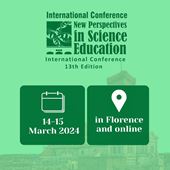Using Visual Notetaking to Promote Participatory Equity in a Science and Math Methods Course
Michael R. Taber, Colorado College (United States)
Kristin Stanec, Colorado College (United States)
Abstract
This paper is part of a multi-year project on implementing Thinkbooks (i.e., visual notebooks [1]) into undergraduate courses to promote equitable learning experiences learning reflexive thinking [2], divergent thinking, and participatory equity. Participatory equity is often defined in economic contexts [3]. Here, we define participatory equity as the internalization of a sense of belonging, where teacher educators, learning science and math concepts, can engage with inquiry, intellectual challenge, and uncertainty in a space that utilizes various identity perspectives as assets, minimizing the “I am not good at math/science” mindset. Participants (11) were undergraduate students in a science, technology, engineering, and math teacher preparation methods course from six majors (courses of study), with 27% from a STEM discipline, 20% from humanities, and 53% from the social sciences. Thinkbooks were used daily as part of the instructional process to assist students in connecting learning experiences to material reality as they learned about their STEM identities. Thinkbooks facilitated visual representation with visual thinking strategies [4], recognizing patterns, and defining structures through new notetaking forms [5]. Learning experiences were designed to develop students’ conceptualizing of science and math while learning how to design learning for pre-adolescent learners. By using Thinkbooks, students were able to practice divergent thinking (i.e., possibilities), convergent thinking (i.e., forms that express meaning), and risk-taking (i.e., the vulnerability associated with expression). Qualitative coding of open responses on a post-survey revealed two major themes: 1) Thinkbooks provided a mindspace for learning about self and 2) Thinkbooks provided a calming opportunity to make connections across concepts. Quantitative analysis indicated significant correlations between focused headspace and notetaking (r = 0.555, p < 0.001), focused headspace and connecting with others (r = 0.405, p < 0.001), and using imagination helps me learn and creating visuals helps me learn (r = 0.528, p < 0.001). Future work now shifts towards a focus on what students and professors perceive as possibilities for instruction and what students perceive as possibilities for deeper development of safe-space embodiment, intuition, tolerance, and the co-creation of knowledge.
|
Keywords |
Teaching methods, inclusion, equity, creativity, student engagement |
|
References |
[1] Paepcke-Hjeltness, V., Mina, M., & Cyamani, A. (2017). Sketchnoting: A new approach to developing visual communication ability, improving critical thinking and creative confidence for engineering and design studies. 2017 IEEE Frontiers in Education Conference (FIE), 1-5. doi:10.1109/FIE.2017.8190659. [2] Gao, X. (2013). Reflexive and reflective thinking: A crucial link between agency and autonomy. Innovation in Language Learning and Teaching, 7(3), 226-237. [3] Basu, K. (2006). Participatory equity, identity, and productivity: policy implications for promoting development. [4] Ware, C. (2010). Visual thinking for design. Elsevier. [5] Torrance, E., & Safter, H. (1999) Making the Creative Leap Beyond. Buffalo, NY: Creative Education Foundation Press. |
 New Perspectives in Science Education
New Perspectives in Science Education





























